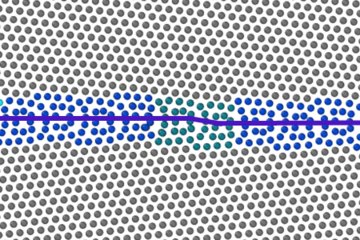All genres
181.
Talk
Transmission electron microscopy of the Fe–Al–Ti–B alloys with additions of Mo. 19th International Microscopy Congress (IMC19), Sidney, Australia (2018)
182.
Talk
Microstructure – property relationships of iron aluminides. 64. Metallkunde-Kolloquium Montanuniversität Leoben, Lech am Arlberg, Austria (2018)
183.
Talk
Theory-guided Design of Novel Fe–Al-based Superalloys. Intermetallics 2017, Educational Center Kloster Banz, Bad Staffelstein, Germany (2017)
184.
Talk
Fe–Al–Ni–Ti Strengthened by L21-(Fe,Ni)2TiAl Precipitates. Intermetallics 2017, Educational Center Kloster Banz, Bad Staffelstein, Germany (2017)
185.
Talk
Additive manufacturing of iron aluminide alloys. Intermetallics 2017, Educational Center Kloster Banz, Bad Staffelstein, Germany (2017)
186.
Talk
Influence of the Al content on the aqueous corrosion resistance of binary Fe–Al alloys in H2SO4. Intermetallics 2017, Educational Center Kloster Banz, Bad Staffelstein, Germany (2017)
187.
Talk
Precipitation-Strengthened High-Temperature Ferrite. 63rd Metal Research Colloquium organized by the Department for Metal Research and Materials Testing of the University Leoben, Lech am Arlberg, Austria (2017)
188.
Talk
Additive manufacturing of iron aluminides: microstructure and mechanical properties. 63. Metallkunde Kolloquium , Lech am Arlberg, Austria (2017)
189.
Talk
Iron aluminides: Recent Alloy Developments and Industrial Processing. TMS 2017 Annual Meeting and Exhibition, San Diego, CA, USA (2017)
190.
Talk
Influence of the Al content on the corrosion resistance of binary Fe–Al alloys in H2SO4. EUROMAT 2017 – European Congress and Exhibition on Advanced Materials and Processes, Thessaloniki, Greece (2017)
191.
Talk
Development and processing of advanced iron aluminide alloys for application at high temperatures. 62. Metallkunde Kolloquium
, Lech am Arlberg, Austria (2016)
192.
Talk
Precipitation-Strengthened High-Temperature Ferrite. MRS Fall Meeting 2016, Boston, MA, USA (2016)
193.
Talk
Creep and Oxidation Properties of Near-Eutectic Mo–Si–B Alloy. MRS Fall Meeting 2016, Boston, MA, USA (2016)
194.
Talk
The wet and hot corrosion behavior of iron aluminides. THERMEC 2016 – Int. Conf. on Processing & Manufacturing of Advanced Materials
, Graz, Austria (2016)
195.
Talk
Microstructure and Mechanical Properties of Iron Aluminides Fabricated by Additive Manufacturing. MRS Fall Meeting 2016, Boston, MA, USA (2016)
196.
Talk
Iron aluminides: From alloy development to processing. The Materials Chain from Discovery to Production (contributed talk), Bochum, Germany (2016)
197.
Talk
Determining the ternary eutectic alloy composition on the Mo-rich side of the Mo–Si–B system. Advances in Materials & Processing Technologies – AMPT 2015, Madrid, Spain (2015)
198.
Talk
Microstructural investigation of chemically graded iron aluminide – steel samples fabricated by laser metal deposition (LMD). Advances in Materials & Processing Technologies – AMPT 2015, Madrid, Spain (2015)
199.
Talk
Microstructures and mechanical properties of Fe–Al–Ti(–B) alloys prepared by ALM. Advances in Materials & Processing Technologies – AMPT 2015, Madrid, Spain (2015)
200.
Talk
Industrial processing of advanced iron aluminide alloys. Advances in Materials & Processing Technologies – AMPT 2015, Madrid, Spain (2015)











